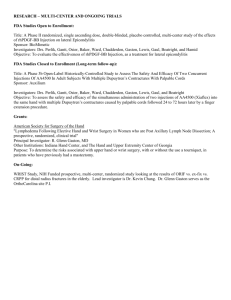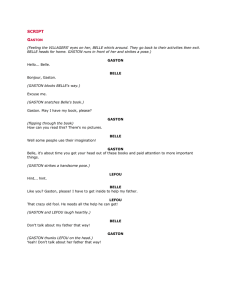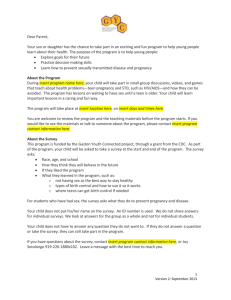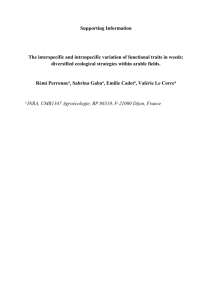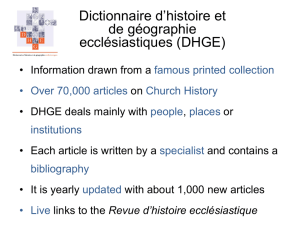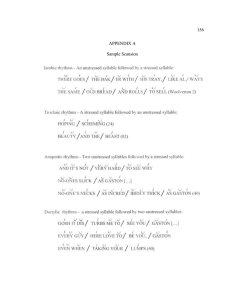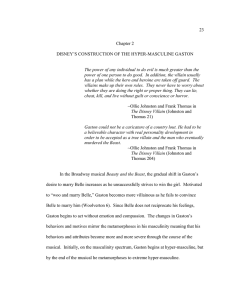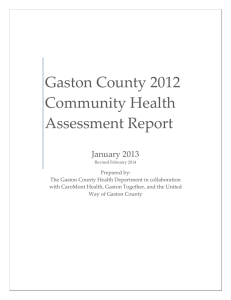Gaston Roupnel
advertisement
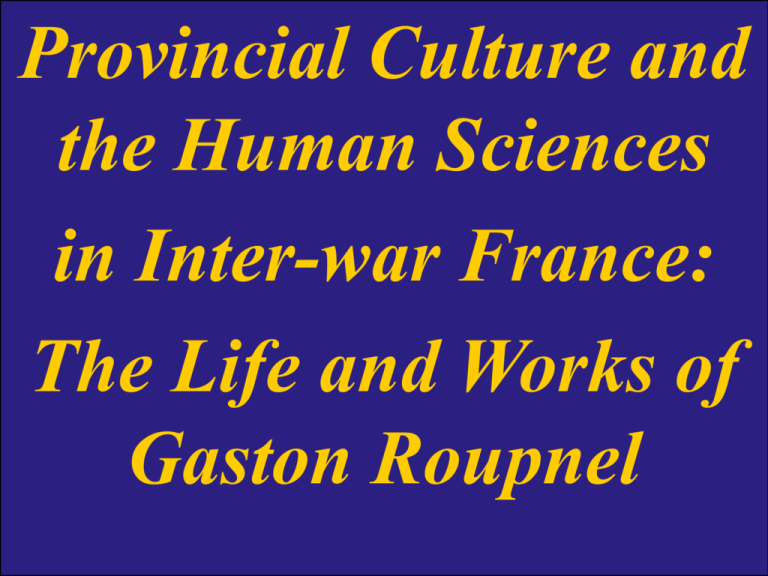
Provincial Culture and the Human Sciences in Inter-war France: The Life and Works of Gaston Roupnel Roupnel lectured at the University in Dijon; was a member of the Académie des arts, sciences et belles lettres de Dijon; and served as president of the regional vintners association in 1936-37. Although he lived a quiet provincial life, Roupnel maintained considerable social and professional contacts. His circle of friends included nationally recognized scholars, artists and intellectuals such as Daniel Halévy, Romain Rolland, Gabriel Belôt, Pierre Mille, Edouard Estaunie, Paul Adam, Gaston Bachelard, Fernand Braudel, Ferdinand Lot and Pierre Teilhard de Chardin. The Provincial Perspective Provincial Scholarship and Historiography The Role of Public Intellectuals Regional and Cultural Identity The Politics of Economic Regionalism Roupnel’s private life and professional career revealed a deeply personal and enduring commitment to the Burgundian region for which he served as cultural interpreter and historical guide. Taken together, the whole of Roupnel’s works may be read as a precocious ‘histoire totale’ of his adoptive ‘pays.’ He embraced regional political concerns publicly and raised regional consciousness through his scholarly efforts to locate and discuss the geographical, historical and cultural roots of the Burgundian heritage-- as a novelist (Nono- 1910; Le Vieux Garain1913; Hé Vivant!- 1927); professor at the University of Dijon; vintner (Maison Roupnel père et fils); journalist (articles for the Dépêche de Toulouse from 1916 to 1924); geographer (Histoire de la campagne française- 1932); historian (“Une Guerre d’Usure-” 1916; La ville et la campagne au xvii siècle- 1922); philosopher (Siloë- 1927 and La nouvelle Siloë- 1945); folklorist (Bourgogne, types et coutumes1936) and essayist (Histoire et Destin- 1943 and “La vie de Notre Seigneur Jésus Christ”- [1963]. Roupnel’s novel Nono (which narrowly missed receiving the prix Goncourt in 1910) established his reputation as a regional novelist. Set within the milieu of GevreyChambertin’s vineyards, Nono fictionalized village morality in order to address the themes of ultimate redemption and forgiveness in modern France. As a shrewd and capable vintner, Roupnel participated in the ‘Côtes-de-Nuits’ trial that ensured the development of the ‘Système d’appellation Controlée’ Roupnel’s Chambertin was selected to represent the vintage at the 1937 International Exposition in Paris Proposed Dissertation Topic • Thèse: “La Société dijonnaise au 17e siècle (d’après la litterature populaire)” • Thèse supplémentaire: La Société de l’Infanterie dijonnaise” La ville et la campagne (1922) Historians were and remain highly enthusiastic: Lucien Febvre reviewed it as a rare and nourishing work written by a veritable historian Marc Bloch, however, found it’s style “too literary” Pierre Goubert, referred to it as his only regional point of departure while working in the 1960s. 1998: Daniel Roche calls it an “unsurpassable work!” Roupnel’s major philosophical work, Siloë (1927) provided an esoteric characterization of Universal Spirit from a monist perspective. It drew from contemporary physics and biology to depict the nature and form of Universal Spirit as infinite and perpetually recurring. Accordingly, Roupnel linked the particular and the universal, the material and the spiritual, as well as the past and the present in an effort to ontologize a system of pre-established harmony. Read in light of his geographical and historical works, Siloë provided the epistemological foundation for Roupnel’s ‘religion of the soil.’ Gaston Bachelard was so enthralled by Siloë, that he wrote a book-length response entitled L’Intuition et l’instant. Roupnel reached the summit of his unique professional and personal celebrity with the publication of l’Histoire de la campagne française in 1932. This work offered a long term analysis of the French agrarian systems from the Neolithic to modern times. It linked physical and human geography across time to illustrate the reciprocal and indissoluble influences between humankind and the natural world. Roupnel’s Histoire de la campagne was innovative in the use of non archival sources such as field shapes, road networks and ecological variations to generate a semiotic analysis of the landscape. Building on the monist philosophy outlined in Silöe, Roupnel sketched an existential history of the affective relations between villagers and the land in order to sustain a mythicoreligious interpretation of the French country side. Dedicated to the author’s peasant ancestors, the work culminates with a paean to the “peasant soul” of France. • The ‘longue durée’ of rural France Roupnel believed that France’s agrarian institutions provided a source of stability, structure and harmony: “let us not hide our preference for a regime that would restore the people’s ancient rights to the soil and, while preserving a portion for each, would restore the rural world to its original Roupnel promoted his own works by sending copies to academics and libraries. (He even subsidized the printing of his own doctoral dissertation) This is a calling card used by the famous French philosopher Henri Bergson to thank Roupnel for having sent him a copy of l’Histoire de la campagne française. Bergson was probably already familiar with Roupnel’s philosophical work- Siloë. Gaston and his wife Suzanne in their garden (1938) Roupnel’s house on the “Place des Marronniers” in Gevrey-Chambertin, France. The large doorway serves to allow wagons filled with grapes to enter the room where the press is kept. TO FIND OUT MORE ABOUT GASTON ROUPNEL: Gaston Bachelard, L’Intuition et l’instant (1932). Magda Bernhardt, Gaston Roupnel und Burgund (1934). “Mélanges,” Le Bien Public, 7 January 1931. Pierre de Saint Jacob, “Gaston Roupnel,” Annales de Bourgogne 18 (1946). Lucien Febvre, “Les morts de l’histoire vivante, Gaston Roupnel,” Annales 2 (1947). “Gaston Roupnel,” Pays de Bourgogne, special edition, 42 (1963). “Hommage a Gaston Roupnel, 1871-1946,” Académie de Dijon 120 (1973). Philip Whalen, Gaston Roupnel: âme paysanne et sciences humaines (Dijon: EUD, 2001).
